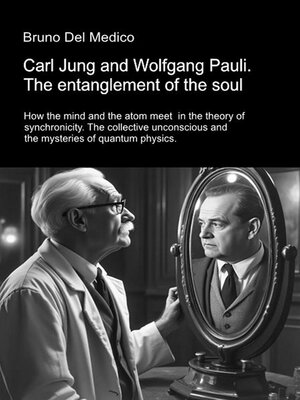Carl Jung and Wolfgang Pauli. the entanglement of the soul.
ebook ∣ How the mind and the atom meet in the theory of synchronicity. The collective unconscious and the mysteries of quantum physics
By Bruno Del Medico

Sign up to save your library
With an OverDrive account, you can save your favorite libraries for at-a-glance information about availability. Find out more about OverDrive accounts.
Find this title in Libby, the library reading app by OverDrive.



Search for a digital library with this title
Title found at these libraries:
| Library Name | Distance |
|---|---|
| Loading... |
The history of 20th-century European culture offers few encounters as fascinating and unlikely as that between Carl Gustav Jung, Swiss psychiatrist and founder of analytical psychology, and Wolfgang Pauli, Austrian theoretical physicist and one of the fathers of quantum mechanics. Their collaboration, which began in 1932 and lasted for more than twenty years, represents one of the most daring explorations of the borderlands between psychology and physics.
This unique collaboration took place during a particularly dramatic period. It began in the 1930s, when Europe was going through a deep crisis: the Great War had just left a heavy legacy of unrest. The next event, World War II, was already foreshadowed by political and cultural upheavals. However, the intellectual climate was one of the most fertile in European history: new ideas were sweeping through physics, philosophy, and psychology. Jung led a group of scholars and therapists in Zurich. He was searching for a depth psychology capable of explaining the great myths, religions, and symbols of humanity. Pauli was also in Zurich, at the Institute of Physics, after contributing in 1925 to the exclusion principle that bears his name. This principle revolutionized atomic physics.
Jung was fascinated by science but perceived its limitations, especially in reducing reality to what is quantifiable. Pauli, a man of rigorous science but with a restless spirit, suffered a deep personal crisis after the death of his mother and the failure of his marriage. In 1932, he turned to Jung for psychotherapeutic counseling. This encounter marked the beginning of a surprising dialogue, half therapeutic, half philosophical, known as the " ." More than 800 letters from this dialogue remain, published years later and now read as a unique historical event.
Jung recognized Pauli as an exceptional interlocutor. Pauli was a friend and colleague of Einstein, Bohr, and Heisenberg, and in 1945 she received the Nobel Prize; however, her scientific lucidity did not exclude a sensitivity to the themes of the unconscious, symbolism, and dreams. In fact, Pauli stimulated Jung with his dreams: visions populated by archetypal symbols, mandalas, and alchemical figures. Pauli dreamed of a "world of shadows" populated by mysterious animals, wheels, and crosses—images that Jung interpreted as signs of the search for a balance between opposites, between scientific rationality and spiritual instinct.
This gave rise to the theory of synchronicity, a concept that Jung developed in the 1940s and defined comprehensively for the first time in 1952 in his famous essay written jointly with Pauli: "Synchronicity as the principle of acausal connections." Synchronicity describes the "meaningful coincidence" between psychic events and physical phenomena, events connected not by material causes but by shared meanings. It is a theory that dares to question the dogma of classical causality, the pillar that had supported modern science since Newton.
In 1948, in Jung's famous "Psychological Club" in Küsnacht, Pauli presented his ideas to an attentive audience: "There is a level, perhaps, where matter and mind are two sides of the same reality." It is an idea that anticipates many of today's debates on neuroscience, the origins of consciousness, and the limits of scientific knowledge.
The collaboration between Jung and Pauli left a profound legacy. It inspired scholars such as Marie-Louise von Franz, an analytical psychologist and collaborator of Jung, and physicists such as David Bohm. The collective unconscious, theorized by Jung, and the mysteries of quantum entanglement continue to suggest that the boundaries between mind and...







